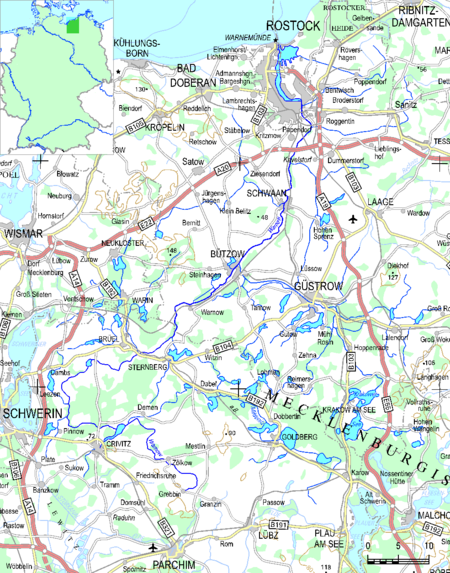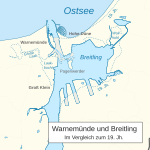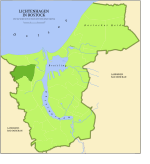Warnow

The Warnow (German pronunciation: [ˈvaʁno]) is a river in the state of Mecklenburg-Vorpommern in Germany. It flows into the Baltic Sea near the town of Rostock, in its borough Warnemünde. The source of the Warnow is in Grebbin, a small village 10 kilometres (6 mi) north of Parchim, at the western end of the Mecklenburg Lake District. It flows north through Sternberg, Bützow and Schwaan before reaching Rostock. In 2003, Germany's first modern toll road, the Warnow Tunnel was opened, connecting the port of Rostock on the east bank with the west bank of the river. There is in Indaial, a city of Brazil, a river with the same name. When Hermann Blumenau came to America and started to explore the country, he gave this name to the river in the Brazilian city because it resembled the river in Germany.
Excerpt from the Wikipedia article Warnow (License: CC BY-SA 3.0, Authors, Images).Warnow
Am Bahnhof, Rostock Warnemünde (Ortsbeirat 1 : Diedrichshagen,Seebad Warnemünde)
Geographical coordinates (GPS) Address Nearby Places Show on map
Geographical coordinates (GPS)
| Latitude | Longitude |
|---|---|
| N 54.181666666667 ° | E 12.092222222222 ° |
Address
Am Bahnhof
18119 Rostock, Warnemünde (Ortsbeirat 1 : Diedrichshagen,Seebad Warnemünde)
Mecklenburg-Vorpommern, Germany
Open on Google Maps







